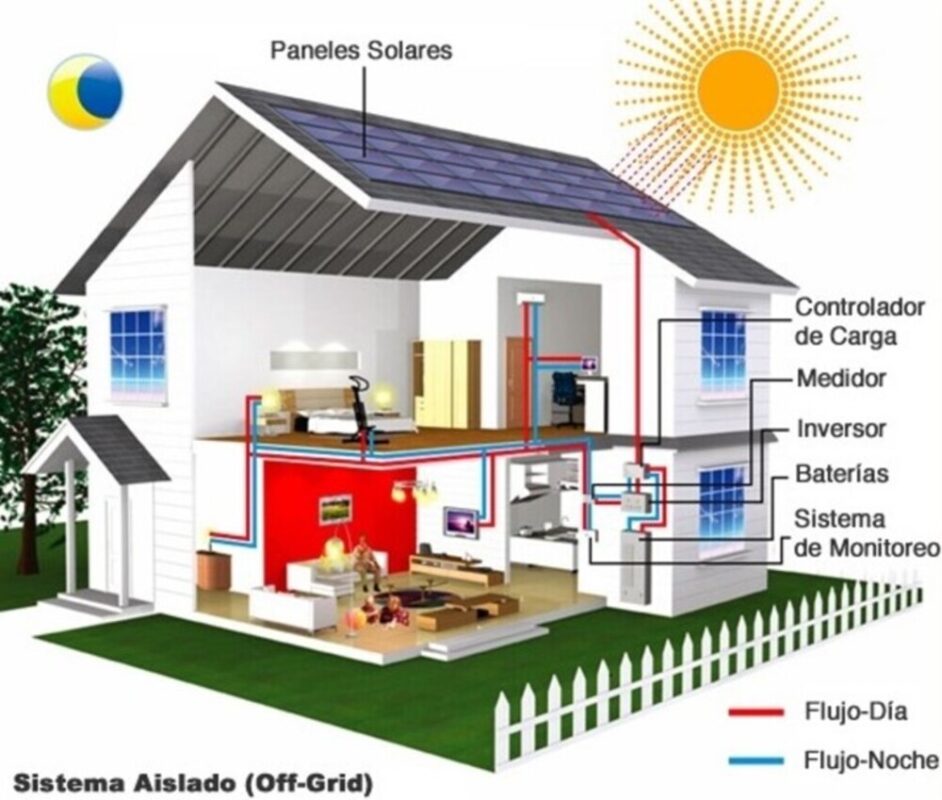Solar Energy
The photovoltaic power system for the home
The use of photovoltaic power system, or solar energy systems, has gained much popularity. Not only as an alternative, but also as a primary source of electricity.
This is because it is a renewable technology that contributes to the reduction of emissions that cause the greenhouse effect.
It is the type of renewable energy, which is the cheapest and easiest to implement among all known clean energies such as wind, hydro. A great advantage is that, with proper maintenance, its life expectancy can easily exceed 25 years.
To learn more about its benefits, we invite you to read the post the advantages of installing a photovoltaic system in your home.
Next, we will describe in a general way, and in the simplest possible way, how a solar energy system works.
Operation and devices of a home photovoltaic power system as a source of electricity
As you probably already know, this modality converts solar energy into electricity that you can use for the different appliances in your home. Its main characteristics are that it is a clean, ecological and cheap form of energy, in fact it is free.
Here is a brief description of how it works:
Solar panel
The sun’s rays strike the solar panels. These transform them into DC electricity at a voltage level that can be 12, 24 or 48 V.
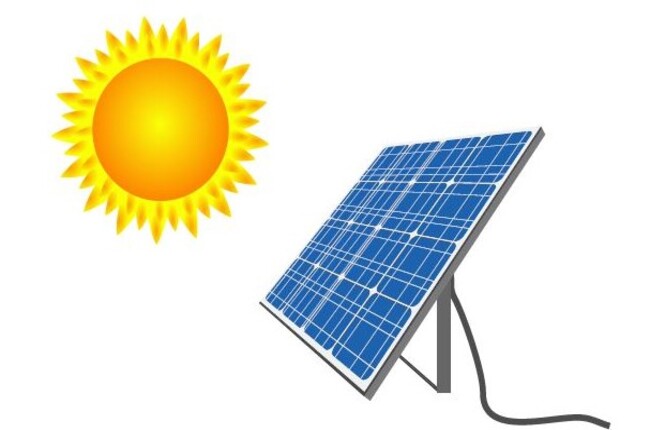
One of the most important points is to define the adequate space for the installation of the solar panels. So much so that this is considered the basis of solar technology.
In the article Solar panels: what you should know before buying I will go deeper into this topic as a source of renewable energy.
Then, this energy is transported by 2 conductors, one positive and the other negative, to the DC/AC inverter, which transforms the DC electricity coming from the solar panels to AC electricity at 110 V o 230 V that you can use in your house.
The inverter
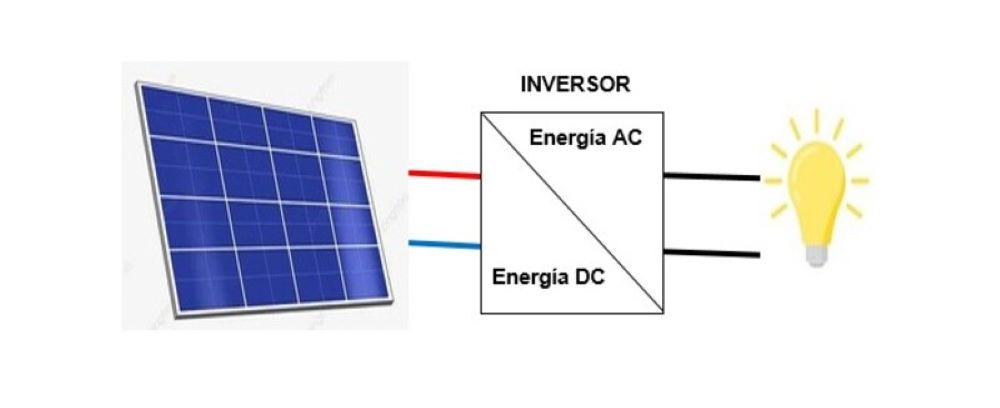
In our post about The solar inverter: what you should know before buying it. Part 1 and The solar inverter: what you should know before buying it. Part 2, you will learn everything you need to know about this equipment.
Also, if you want to learn more about the conductors to be used, be sure to read the article Cables and electrical conductors: general information.
You must consider a component called solar charge controller. It regulates the voltage coming out of the solar panel to the voltage level needed by the inverter and the batteries.
For more detailed information, see the article that is The solar charge controller and how it works, we are preparing.
Their need is based on the voltage delivered by the solar panels. Since this is in direct relation to the intensity of the sun’s rays that are reaching them. As well as the installation site of the solar panels.
However, you should know that in some types of inverters, the solar charge controller is already integrated.
This is the basic configuration of a solar energy system. But if you want it to provide you with additional energy saving features, you will have to include other equipment. Let’s see.
Batteries
In case you want to use solar energy at night, on cloudy days or simply to save electricity, it is best to include batteries.
You should know that their average useful life is 2 to 3 years according to their quality, brand and charge and discharge cycles.
However, not using them does not mean that the system no longer has the advantages of being a sustainable form of energy. Since they are only an additional part, although indispensable, if you want to store electrical energy for later use.
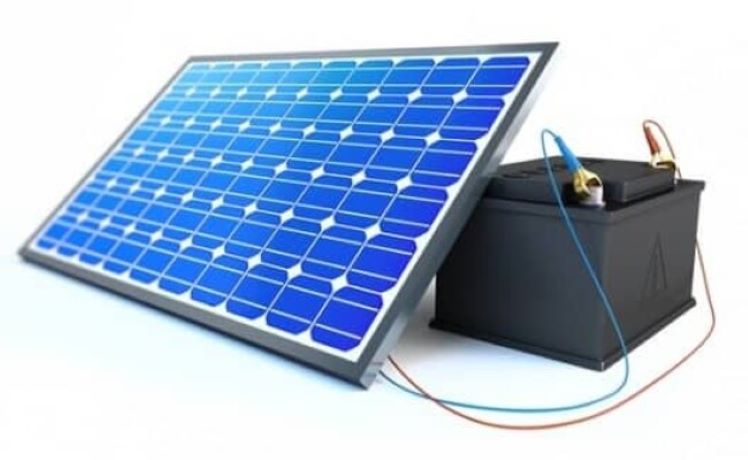
If you want to sell your surplus electricity to the system, you can connect a device called a «consumption meter» which allows you to inject electricity into the commercial network, making the system provide sustainable energy.
Depending on the agreement you have with the utility company and the amount of energy you supply, you will be paid in addition to your energy savings.
In this way you also reduce the energy consumption of the power grid, with the environmental advantages that brings.
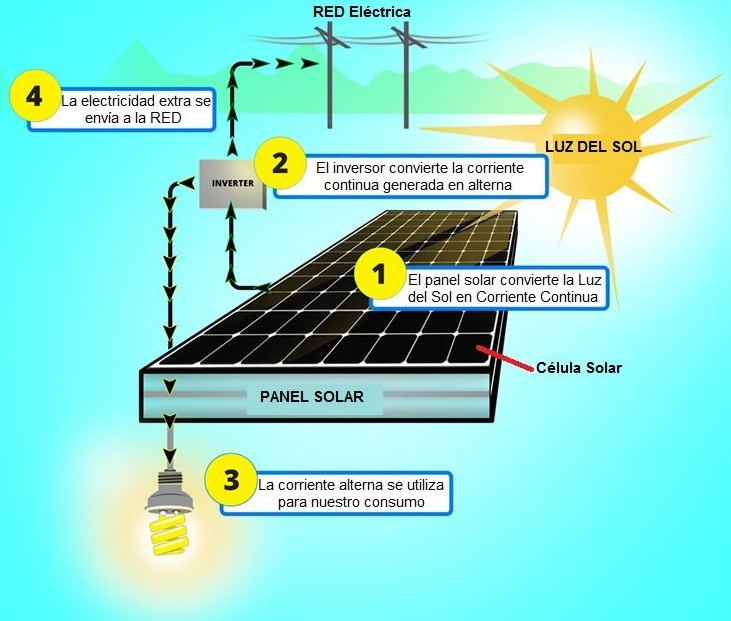
Below we show you a complete schematic of a photovoltaic system, integrating all the components that we have mentioned, this in block diagram to make it more understandable.
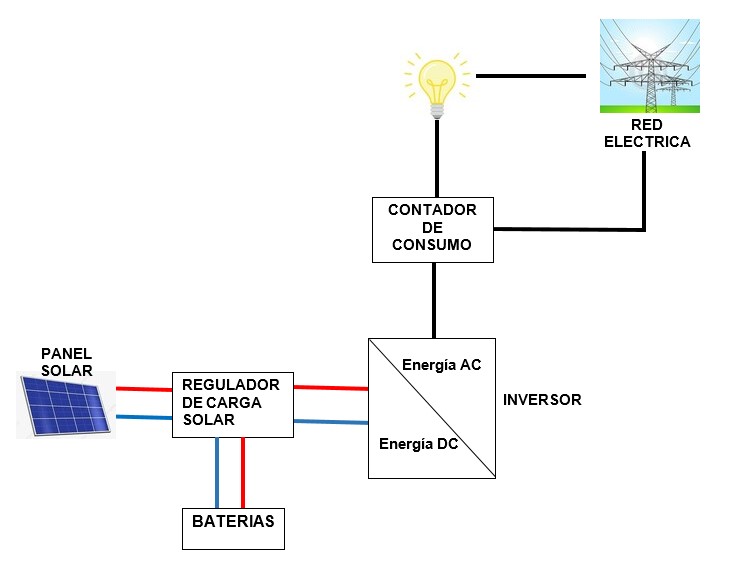
Note that it has been represented with 2 conductors in blue and red for the poles – and +, respectively, in areas where the voltage is DC type and with black lines where AC electricity circulates.
Do not miss the next articles that energydcac has for you to know much more about solar systems for your home. If something is not clear to you about solar technology, do not hesitate to write us and we will gladly answer you.
Video about a solar home energy system
Image sources
- greenmatch.co.uk
- electricaltechnology.org
- energydcac.com

